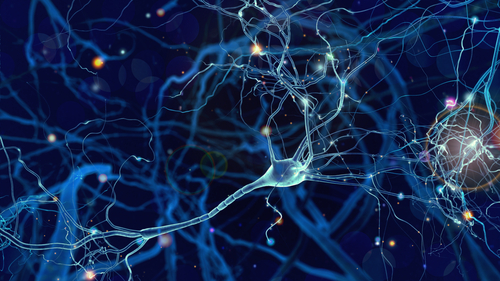2 Potassium Channels Key to Fast Transmission of Impulses Along Myelin-rich Nerve Fibers, Study Shows

Two potassium ion channels located at gaps between segments of myelin are required for high frequency and high-speed conduction of electrical impulses along myelin-rich nerves, a study shows.
Loss of the workings of these potassium channels in what are called the nodes of Ranvier slowed nerve conduction, and impaired the sensory response of a rat. These findings suggest that similar problems with these channels may exist in people with multiple sclerosis (MS).
The study “TREK-1 and TRAAK Are Principal K+ Channels at the Nodes of Ranvier for Rapid Action Potential Conduction on Mammalian Myelinated Afferent Nerves” was published in the journal Neuron.
Myelin, the fat-rich substance that wraps around nerve fibers (axons), works to insulate and increase the velocity of the signals relayed by nerve cells. Gaps between segments of myelin, or nodes of Ranvier, also work to amplify these signals.
Nerve impulses must travel and arrive at relay points extremely quickly for effective connection and communication between brain regions.
Researchers at the University of Alabama at Birmingham (UAB) showed for the first time that the nodes of Ranvier have potassium channels that allow the myelinated nerves to propagate nerve impulses at very high frequencies, and with high conduction speeds. This is key for fast transmission of sensations and rapid muscle control in mammals.
The nodes of Ranvier were first discovered in 1878 by the French scientist Louis-Antoine Ranvier. Later research, dating from 1939, showed that they work as relay stations placed along myelinated nerves — about 1 millimeter apart — for proper conduction of nerve impulses at rates of 50 to 200 meters per second.
Between these nodes, the nerve is wrapped in myelin. When the nerve fires, the electrical impulse travels along the nerve (called action potential) from one node to the other at a speed 100 times faster than that of impulses in nerves lacking myelin.
Neuroscientists know that ions crossing the membrane of nerve cells are required to fire electrical impulses along nerves, but whether potassium ion channels were present in the nodes of Ranvier remained a matter of debate. No one had been able to use patch clamps — a technique that allows recording of whole-cell or single-ion channel currents flowing across membranes — to the nodes of the small intact nerves in mammals.
UAB researchers led by Jianguo Gu, PhD, worked with a rat and identified two ion channels, called TREK-1 and TRAAK, as the main potassium channels in the nodes of Ranvier of the rat’s myelinated nerve.
Most importantly, they showed these ion channels allow high-speed and high frequency conduction of nerve impulses along the myelinated afferent nerves — those carrying information from the sensory organs (like the eyes or skin) to the central nervous system (the brain and spinal cord). TREK-1 and TRAAK channels were highly enriched — 3,000 times higher — at the nodes of Ranvier in afferent nerves than in the nerve cell’s body.
When the scientists removed (knocked down) these channels, conduction speed in the rat’s nerve dropped by 50 percent, and the rat’s “aversion reaction” to its whisker being flicked was slower.
“TREK-1 and TRAAK are clustered at nodes of Ranvier of myelinated afferent nerves,” the researchers concluded, and “suppressing these channels retards nerve conduction and impairs sensory functions.”
Increasing evidence shows that dysfunction in the nodes of Ranvier are present in neurological diseases, including MS. Whether autoantibodies (antibodies that attack the body’s own tissues) target the TREK-1 and TRAAK to affect nerve conduction, leading to sensory and motor problems such as those seen in MS, remains to be investigated, Gu said in a UAB news release written by Jeff Hansen.






